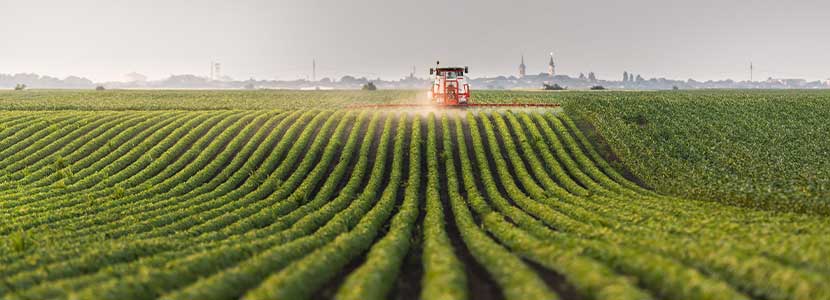Europe’s soybean cultivation area has increased continuously over the past 20 years. However, imports still account for the majority of consumption.
AgroParisTech and INRAE teamed up to assess the European continent’s ability to become self-sufficient in soybeans, taking climate change into account. Scientists from these two institutions developed projection models based on global climate and agronomic databases. Results were published on April 7 in Nature Food. These show that Europe could achieve self-sufficiency ranging from 50% to 100% if 4% to 11% of the land was devoted to soybean production.
Such an expansion would have significant economic and environmental benefits and in turn reduce nitrogen fertilizers’ use.
Currently, Europe imports almost 90% of the soybeans it consumes, from the United States and Brazil. Soybean acreage has quadrupled on the continent in 12 years: from 1.2 Mha in 2004 to 5 Mha in 2016. This represents only 1.7% of the total cultivated area.
However, local soybean cultivation has many economic and environmental advantages:
- They fix nitrogen in the soil thanks to the symbiotic bacteria that live in their roots, which is beneficial for the next crop.
- Reduces the use of nitrogen fertilizers and their environmental impact.
- In addition, imports would be reduced as well as the costs and pollution associated with them.
That is why researchers set out to explore if the European continent could become self-sufficient in soybeans. Analysing if climate change could be of help or a hindrance.
For this, they developed a model approach based on the joint use of global agronomic and climate databases, with machine learning algorithms. Thanks to this model, they were able to make projections of soybean yields at the continental level directly from available data provided according to different crop area scenarios and based on forecasts of present and future climatic conditions.
With 11% of farmlands dedicated to soybeans, self-sufficiency would be achieved
Results show that the European agricultural area suitable for soybean cultivation is much higher than the currently harvested area. Projections indicate an average yield of 2 tons per hectare under current weather conditions, even without irrigation or fertilizers. This production would increase with future weather conditions between +0.4 and +0.6 tonnes per hectare in 2050 and 2090.
Projections also show a change in productive areas. Where those from the south of the continent to the north and east would become more productive due to climate change.
Considering the constant need for soybeans, results suggest that 50 to 100% soy self-sufficiency can be achieved in Europe, with current and future climates if 4 to 11% of the cultivated land is devoted to this crop. Assuming that fertilizers are not used on soybeans, this increase would reduce the use of nitrogen fertilizers on the European continent by 4-17%.
Source: NATURE FOOD. Data-driven projections suggest large opportunities to improve Europe’s soybean self-sufficiency under climate change 2022.
